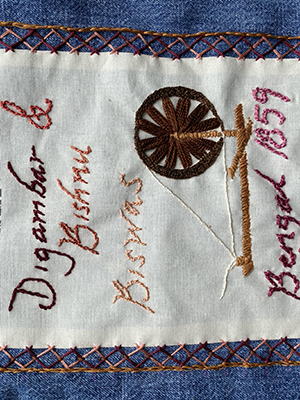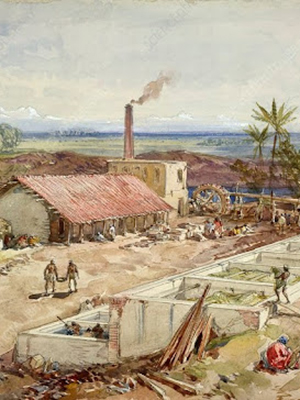Biswas brothers
 Anushka Patel ’23
Anushka Patel ’23
When the British lost their American colonies, they had to look elsewhere for indigo and cotton plantations. Their attention was drawn to Bengal, where a Frenchman named Louis Bonnaud had established a very lucrative indigo crop in 1777. The British soon forced Indian farmers to plant indigo instead of food crops. If the farmers were secretly sowing rice instead, the British would burn their fields, evict them, kidnap their family members, or subject them to physical torture. If the farmers complained they could not afford to plant only indigo, the British advanced them loans at rates so high they could never pay them back for generations to come. By 1859, widespread famine was the result of not growing enough food and the farmers went on strike led by two brothers, Bishnucharan and Digambar Biswas. The British captured the brothers, put them on trial and had them publicly hanged. They increased rents and taxes and slaughtered more farmers. The Bengali intelligentsia, the press, Hindus, Muslims, Christian missionaries and the whole rural population supported the revolt, especially after Dinabandhu Mitra, a Bengali postal worker wrote a play portraying the cruelty of the farmers’ situation. Finally, after years of brutal oppression, the government appointed the Indigo Commission in 1860 which found “not a chest of Indigo reached England without being stained with human blood.” Investigators were moved by the non-violent protests, many led by women and children.

By the end of that year, the British ruled that farmers should not be forced to grow indigo and the Bengali indigo factories shut down. Many British plantation owners simply relocated to Bihar, a state in northeastern India. Inspired by the Biswas brothers, it was here that Mahatma Gandhi launched his first campaign of nonviolent resistance in India against the tyrannical British indigo plantation owners. By 1921, he had become the leader of the Indian National Congress and had stopped wearing his English lawyer’s suit and adopted instead the traditional dhoti garment woven with hand-spun yarn as a mark of identification with India's rural poor. When the British finally left in 1947, India chose to place a spinning wheel like Gandhi used at the center of their new flag.